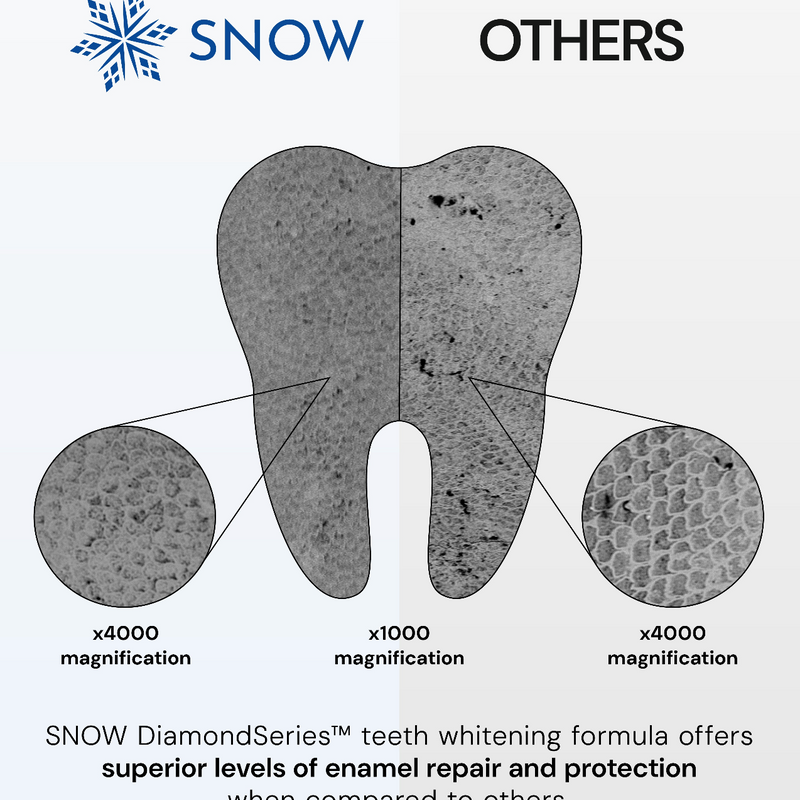Most people believe bright, white teeth are the primary indicator of a healthy smile. However, while keeping your teeth white and decay free is important, taking care of the structures that support your teeth – particularly, your gums – is also essential.
Neglected gums and poor oral hygiene are major risk factors for tooth loss. Consequently, following a good oral hygiene routine at home is recommended to prevent common issues like cavities and gum infections. However, if you’re not up to date on your biannual dental cleanings, you’ve likely developed a condition known as periodontitis or periodontal disease.
Eventually, periodontal disease can lead to bad breath, gum recession, cavities, and even bone and tooth loss, so it’s vital to treat the condition as early as possible. In severe gum disease or chronic periodontitis, scaling and root planing are the most common treatment options to restore healthy gum tissue.
What is periodontal disease?
Periodontal disease, also known as gum disease, occurs when pathogenic bacteria attack the gums, causing inflammation and infection. The mildest form of gum disease, gingivitis, is extremely common, with almost half of adults over 30 suffering from some form of the disease.
Gingivitis can typically be treated with a thorough dental cleaning and an improved oral hygiene routine. However, gum disease treatment may be necessary if the disease progresses to a more advanced stage.
In the more severe stages of gum disease, a serious infection known as periodontitis may develop. Without professional intervention from a dentist, periodontitis can destroy the bone that supports the teeth, leading to tooth loss and chronic gum infections. For these patients, scaling and root planing is often the most effective way to protect and improve their oral health.
What causes periodontal disease?
The most common cause of gum disease is poor dental hygiene. Failure to regularly brush and floss your teeth leads to an accumulation of a sticky, bacteria-laden substance called plaque. Without a proper oral hygiene routine, the bacteria can grow and spread, producing tooth-decaying acids and inflammation.
Over time, plaque hardens to form calculus, sometimes referred to as “tartar.” Once it’s allowed to accumulate below the gum line, calculus can cause irreversible damage to the supporting structures of the teeth. Under the gumline, calculus creates pockets between the tooth and its supporting bone. These pockets fill with more bacteria and grow deeper without treatment, leading to widespread infection and bone loss.
A dentist can only treat infected gum tissue by removing the calculus and cleaning out the pockets to help restore them to a healthier state. Unfortunately, calculus is impossible to remove by brushing and flossing at home – only a dentist or dental hygienist can remove it during a professional cleaning. Therefore, most people should visit their dentist for cleanings at least twice yearly to prevent gum disease.

Risk factors for gum disease
Although poor oral hygiene is the leading cause of gum disease, other contributing factors include:
- Certain diseases, such as HIV/AIDS, cancer, diabetes, and Crohn’s disease
- Hormonal changes, including those related to pregnancy and menopause
- Inadequate nutrition and vitamin deficiencies
- Certain medications that cause dry mouth
- Recreational drug use, such as vaping
- Using tobacco products
- Genetics
- Obesity
How is gum disease diagnosed?
Most people are diagnosed with gum disease during regular dental check-ups. Dentists visually inspect the gums for symptoms such as bleeding, swelling, redness, and recession. Additionally, at most appointments, a hygienist will use a special tool to measure the spaces between your teeth and gums in a procedure called “probing.” They also evaluate bone levels and density on routine dental x-rays.
Healthy probing measurements are between 1 and 3 millimeters (mm), while measurements of 4mm suggest deepening pockets between the tooth and gums and probable gingivitis. Deeper pockets of 5mm or more typically indicate periodontal disease.
If your dentist suspects gum disease, they will also take additional x-rays to look for sub-gingival calculus and bone loss between the teeth. X-rays revealing infection or decay are also good indications of gum disease.

When do you need scaling and root planing?
Scaling and root planing is required when there is excessive calculus buildup beneath the gum line that can not be removed during a standard dental cleaning. Additionally, most people with chronic periodontitis need scaling and root planing treatment.
Although a thorough oral exam is necessary to diagnose gum disease, there are several common signs that you may need scaling and root planing, including:
- Bleeding when brushing or flossing
- Dentures that no longer fit properly
- Spaces developing between teeth
- Pressure or temperature sensitivity
- Swollen, red, or tender gums
- Loose teeth
- Pain when chewing
- Changes in bite
- Bad breath
What is scaling and root planing?
Scaling and root planing is a type of deep cleaning procedure that targets the entire tooth and surrounding structures, allowing the dentist or dental hygienist to reach below the gum line and remove calculus from the crown and roots.
The primary goal of a deep cleaning is to thoroughly clean the infected pockets around the teeth and restore healthy gum tissue. Because these periodontal pockets are often very deep, local anesthesia is typically used to help minimize discomfort.
Scaling
Tooth scaling is the first step of treatment. During this process, handheld instruments, a laser, or an ultrasonic device is used to remove calculus and bacteria from the entire tooth surface, including areas beneath the gum line.
Ultrasonic devices are often used for dental scaling and usually include an irrigation process to aid in calculus removal. In some cases, the irrigation fluid also consists of an antimicrobial agent to help reduce bacteria.
Root planing
Scaling is followed by root planing treatment. Like scaling, root planing also involves detailed cleaning of the tooth’s roots. However, the primary purpose of root planing is to smooth the root surfaces and discourage the further buildup of calculus and bacteria.
During this stage, the roots of teeth below the gum line are cleaned to smooth out rough areas. This process promotes healing and also prevents bacteria from easily infecting the area in the future. Once root planing is complete, the newly cleaned and smoothed surfaces are clear of infection, allowing the gum tissue to heal and more firmly attach themselves to the teeth.
How long does a scaling and root planing treatment take?
Depending on the severity of your condition and your provider’s preference, scaling and root planing are typically completed in one or two dental visits. For those who opt to complete the entire deep cleaning treatment in one appointment, the procedure should take no more than one or two hours.
However, because deep cleanings are often completed using local anesthesia, some providers prefer to treat one side of the mouth at a time. With this approach, patients won’t have to leave their appointment with their entire mouth numb after each treatment.
Scaling and root planing aftercare
After scaling and root planing, it’s normal to experience some pain for a day or two and temperature sensitivity for up to a week. Your gums may also be swollen and bleed for a few days while they heal. Your dentist may recommend an over-the-counter pain medicine, such as Tylenol, to relieve discomfort. They may also prescribe a prescription mouthwash to reduce bacteria and help prevent the gum infection from returning.
Most importantly, patients who undergo a deep cleaning need to maintain a meticulous oral hygiene routine at home, including brushing and flossing daily. Additionally, most dentists recommend that patients return for regular dental cleanings every three to four months instead of the standard six. These periodontal maintenance appointments include a thorough evaluation of the patient’s gum health to ensure the condition has not returned.
How effective is scaling and root planing at healing gum tissue?
Scaling and root planing is considered the “gold standard” to treat gum disease. The primary goals of this nonsurgical treatment are to heal infected gum tissue and prevent further destruction of the teeth and their supporting structures.
A deep cleaning will also help reduce the depths of periodontal pockets, which mitigates the risk of experiencing tooth and bone loss associated with gum disease. When these goals are met, scaling and root planing treatment is deemed effective, and periodontal health is maintained.
What are the risks of scaling and root planing?
The risks associated with scaling and root planing are minimal. However, because you may be at risk for infection following the treatment, your dentist may prescribe a bacteria-reducing mouthwash for up to a few weeks.
Side effects, such as pain and sensitivity, are common for a few days after the procedure but should clear up within a couple of weeks. However, if they don’t or the pain is extreme, contact your dentist for a follow-up appointment.
How to prevent gum disease
Periodontal disease is very common but largely preventable. In most cases, it’s the result of poor oral hygiene.
You can significantly reduce your risk of developing gum disease by getting regular dental check-ups and brushing and flossing regularly. Other great oral hygiene habits include:
- Replacing toothbrushes when their bristles are worn
- Quitting smoking or using tobacco products
- Using an antimicrobial mouthwash
- Brushing with a soft toothbrush
- Eating a more balanced diet
- Using fluoride toothpaste
Summary
Periodontal disease is the leading cause of tooth loss among adults, making it essential to treat the condition as early as possible. Thankfully, dental scaling and root planing are common procedures used to treat chronic periodontitis and, hopefully, save your smile.
Dentists and dental hygienists perform this nonsurgical treatment with or without local anesthesia, typically in one or two separate appointments. Also known as a “deep cleaning,” scaling and root planing are critical to restoring health to the teeth and gums.
Only a licensed dental professional has the tools and skills necessary to remove the calculus and bacteria that cause periodontal disease. However, good dental care at home is also essential to help ward off gum disease or keep it from returning. To lower your chances of developing periodontal disease in the future, brush and floss daily, and be sure to visit your dentist for regular cleanings.
FAQs
What is a root planing procedure?
Scaling and root planing are similar, but root planing involves the removal of calculus from the roots, not the crown. Additionally, the root of the tooth is smoothed out during root planing, removing any uneven areas and helping prevent bacteria from easily colonizing in the future.
How long does it take to recover from root planing?
After any deep cleaning, it’s normal to experience soreness and teeth sensitivity for a day or two. However, symptoms may last up to a week. Ultimately, the exact time of your recovery will depend on the severity of your gum disease.
Is root planing necessary?
Root planing is not necessary for every patient. Scaling and root planing treatment is typically only required when excessive calculus buildup or deep, infected periodontal pockets cannot be treated during a simple dental cleaning.
What is the difference between scaling and root planing?
Scaling involves the removal of calculus and bacteria from the crown of the tooth, including beneath the gum line. Root planing also involves calculus removal. However, its primary goal is to actually plane the root surface, removing calculus, and creating a smooth surface to prevent further buildup of bacteria.

























